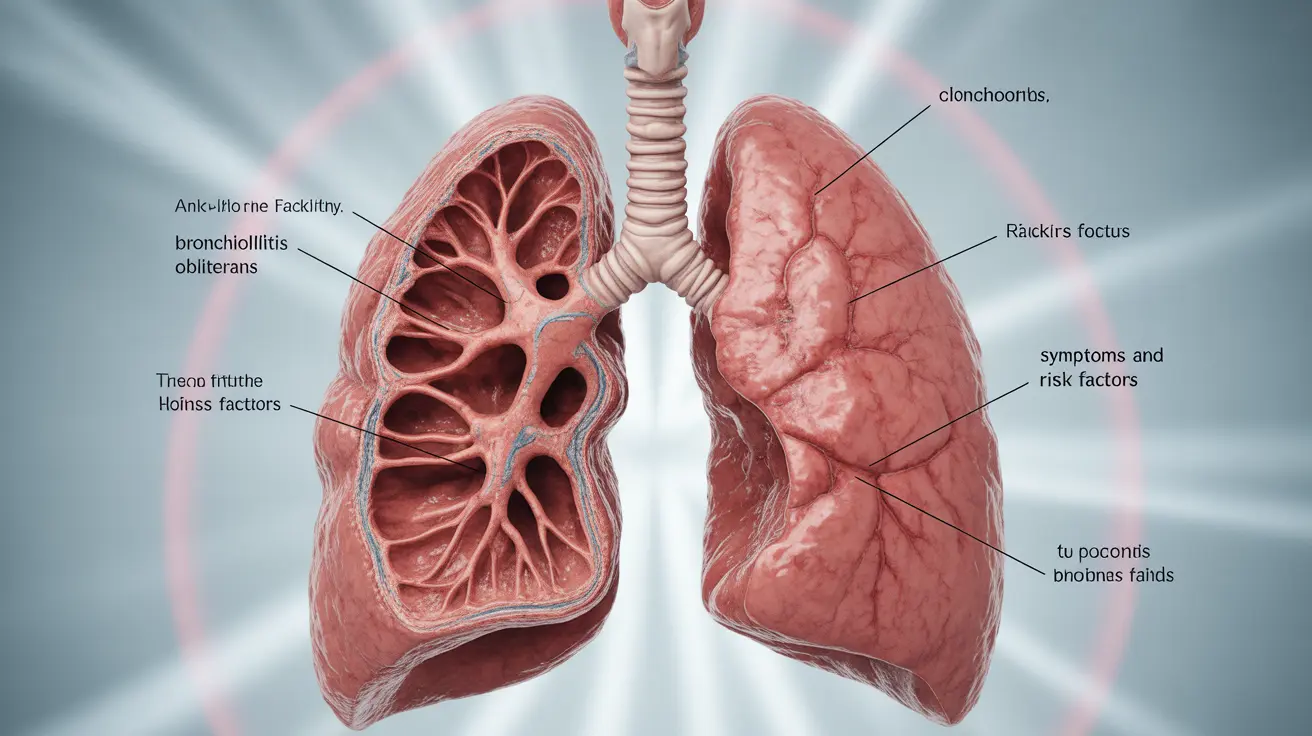Popcorn lung, medically known as bronchiolitis obliterans, is a serious respiratory condition that requires early detection and proper medical attention. This progressive lung disease can cause permanent damage to the small airways in your lungs, making it crucial to recognize its symptoms and understand the risk factors involved.
While relatively rare, popcorn lung has gained increased attention due to its potential connection with vaping and certain occupational exposures. Understanding the warning signs and seeking timely medical care can significantly impact the management of this condition.
Key Symptoms of Popcorn Lung
Early recognition of popcorn lung symptoms is essential for proper diagnosis and treatment. Common warning signs include:
- Persistent dry cough
- Shortness of breath, especially during physical activity
- Wheezing
- Unexplained fatigue
- Chest pain or tightness
- Difficulty breathing deeply
These symptoms typically develop gradually and may worsen over time if left untreated. Many people initially mistake these signs for asthma or bronchitis, which can delay proper diagnosis and treatment.
Diagnosis and Medical Assessment
Healthcare providers use several methods to diagnose popcorn lung accurately:
- High-resolution CT scans
- Pulmonary function tests
- Chest X-rays
- Lung tissue biopsy (in some cases)
- Detailed medical history evaluation
Early diagnosis is crucial for implementing effective treatment strategies and preventing further lung damage.
Risk Factors and Prevention
Occupational Exposure
Certain workplace environments may increase the risk of developing popcorn lung:
- Flavoring manufacturing facilities
- Microwave popcorn production plants
- Chemical processing plants
- Textile manufacturing facilities
Vaping and E-cigarette Use
Recent concerns have emerged about the potential link between vaping and popcorn lung, particularly due to the presence of certain flavoring chemicals in e-cigarette products. While research is ongoing, health experts recommend avoiding these products to reduce risk.
Treatment Approaches
While popcorn lung cannot be cured, several treatment options can help manage symptoms and slow disease progression:
- Corticosteroids to reduce inflammation
- Bronchodilators to help open airways
- Supplemental oxygen therapy
- Cough suppressants for symptom relief
- Antibiotics when necessary for infections
Prevention Strategies
Taking proactive steps to prevent popcorn lung is essential, especially for those in high-risk environments:
- Using appropriate personal protective equipment
- Ensuring proper workplace ventilation
- Avoiding exposure to harmful chemicals
- Regular medical check-ups for early detection
- Steering clear of vaping products and e-cigarettes
Frequently Asked Questions
What are the most common symptoms of popcorn lung that I should look out for? The most common symptoms include a persistent dry cough, shortness of breath, wheezing, and chest tightness. These symptoms often develop gradually and may worsen with physical activity.
How is popcorn lung diagnosed, and what tests are involved in confirming the condition? Diagnosis typically involves a combination of high-resolution CT scans, pulmonary function tests, and sometimes lung biopsies. Doctors will also review your medical history and potential exposure to risk factors.
Can vaping or using flavored e-cigarettes cause popcorn lung and increase the risk? While research is ongoing, there is concern about the potential link between vaping and popcorn lung due to certain flavoring chemicals used in e-cigarettes. Healthcare professionals recommend avoiding these products to minimize risk.
What treatments are available to manage popcorn lung symptoms and slow its progression? Treatment options include corticosteroids, bronchodilators, supplemental oxygen therapy, and medications to manage specific symptoms. While there is no cure, these treatments can help control symptoms and slow disease progression.
How can I reduce my risk of developing popcorn lung, especially if I work in an environment with chemical exposure? To reduce risk, use appropriate personal protective equipment, ensure proper workplace ventilation, avoid exposure to harmful chemicals, get regular medical check-ups, and avoid vaping products. If you work in a high-risk environment, following safety protocols is crucial.




